pectrum diagrams
Complex waves can be decomposed into the simpler waves that make them up. We're interested in diagraming the frequencies and the amplitudes of these simpler waves.E.g.,


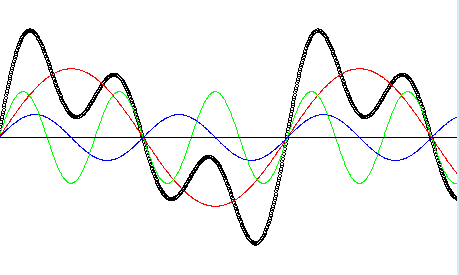
The simple waves that make up the complex wave are:
| Component wave | Frequency | Amplitude |
| A | 100 Hz | 30 dB |
| B | 200 Hz | 10 dB |
| C | 300 Hz | 20 dB |
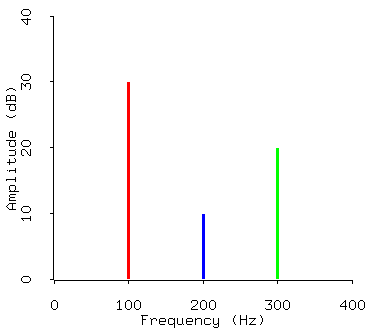
This kind of spectrum diagram is especially convenient for naturally occurring waves, which are typically composed of a lot of simple waves. Two examples:
A flute playing middle C:

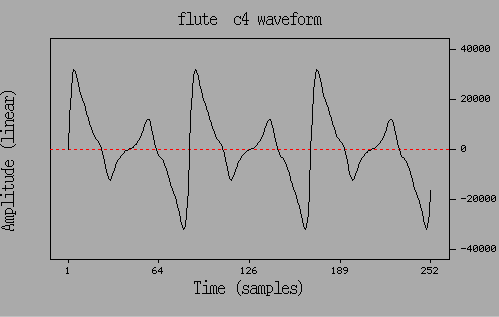
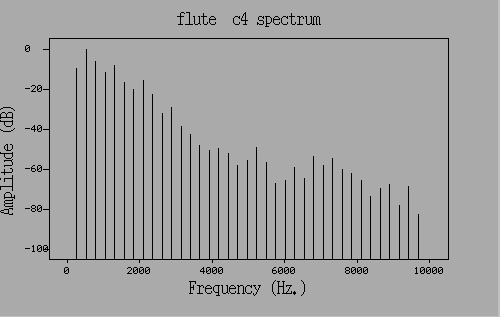
A bass clarinet playing an A-sharp (two below middle C):

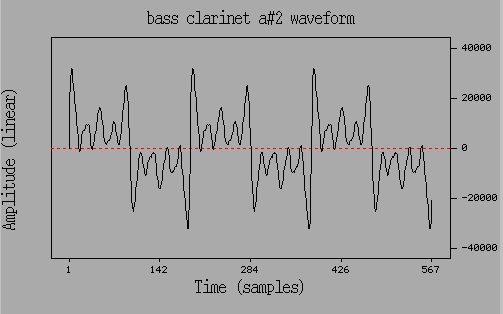
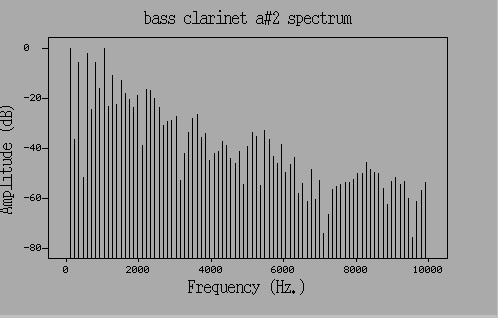
(Sounds and plots for the musical instruments come from Geoffrey Sandell's SHARC Timbre database at Loyola University Chicago.)
 Don't confuse these spectrum diagrams with spectrograms (which we'll cover later).
Don't confuse these spectrum diagrams with spectrograms (which we'll cover later).
No hay comentarios:
Publicar un comentario